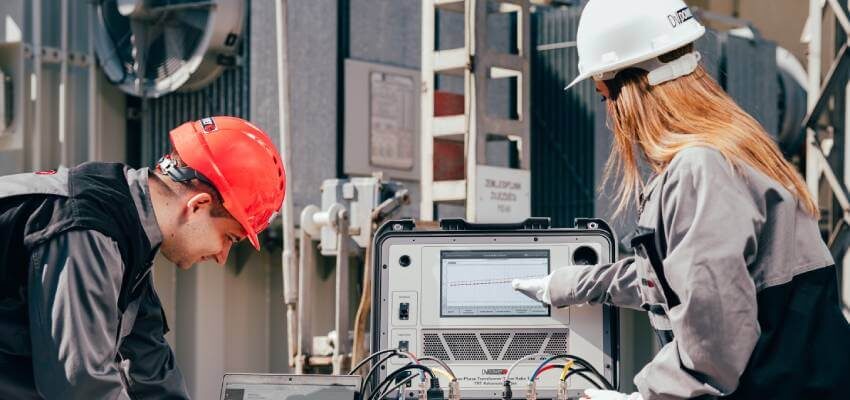
Importance of using high test voltage for transformer turns ratio test
The transformer turns ratio test is one of the fundamental transformer routine tests declared by both IEC 60076-1 and IEEE C57.12.90. standards.
byEdis Osmanbašić

The transformer turns ratio test is one of the fundamental transformer routine tests declared by both IEC 60076-1 and IEEE C57.12.90. standards. When the transformer has an on-load tap changer (OLTC), this test should be performed for each tapping. Usually, the turns ratio test also includes additional tests such as phase angle, connection symbol (winding configuration or transformer vector group), and excitation current measurement [1]. The transformer turns ratio represents the ratio of the number of turns in the HV windings to that in the LV windings. In the case of field routine tests, the turns ratio test is performed by applying a reduced test voltage to HV terminals and measuring an induced voltage at LV terminals under no-load transformer conditions. The ratio of those measured voltages is approximately equal to the transformer turns ratio. IEC 60076-1 and IEEE C57.12.90 standards declare that the turns ratio test shall be conducted at a rated or lower test voltage and rated frequency by applying voltage on the HV side and measuring the induced voltage on the LV side. This is the most popular method used by most commercially available test devices. Other available test methods, such as the comparison method, the capacitance, and the power factor bridge method, are rarely used in practice. The turns ratio needs to be checked on each tap position. In the case of three-phase transformers, when each phase is independent and accessible, single-phase power should be used, although, when convenient, three-phase power may be used [2].
When generating a single-phase excitation voltage, the test device supplies a single-phase excitation test voltage to each of the three transformer primary windings. The induced voltages across each of the corresponding unloaded transformer windings are then measured; the ratio of these voltages is calculated and shown on display. It is repeated for all three phases.
When generating a true three-phase voltage, the test device generates and applies a true three-phase excitation test voltage to the three transformer primary windings. The induced three-phase voltages across the unloaded transformer windings are measured, and the transformer turns ratio is calculated for all three phases [3].







